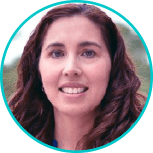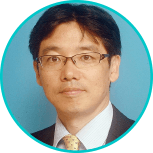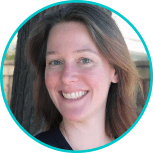
Inorganic Chemistry Editor-in-Chief William B. Tolman is excited to announce the appointment of three new Associate Editors to the journal’s editorial team.
Starting November 1, 2017:
- Suzanne C. Bart, Associate Professor of Inorganic Chemistry, Purdue University
- Hiroshi Kageyama, Professor, Department of Energy and Hydrocarbon Chemistry, Graduate School of Engineering, Kyoto University
Starting January 1, 2018:
- Brandi M. Cossairt, Assistant Professor of Chemistry, University of Washington
“One of the strengths of the journal is its breadth, which reflects the diverse topics with inorganic chemistry at their core that our community studies,” Tolman says. “It is imperative that new editors have a wide-ranging expertise, especially in fields that are garnering significant global attention, such as solid-state, inorganic materials, main-group, and f-block coordination chemistry. The new editors are leaders in these areas and thus are well-poised to evaluate contributions we receive going forward.
In addition, I think it is important to keep bringing new perspectives and insights to the board of editors so as to best address the shifting research landscape. The new editors bring fresh, diverse voices to the journal, which I anticipate will result in new initiatives, enhanced global impact, and even better collaboration with sister journals in the ACS portfolio.”
I reached out to the new editors to learn more about them and their research. Read on to find out what they said and to learn why Tolman thinks each is a great fit for Inorganic Chemistry.

Suzanne C. Bart, Purdue University
“Suzanne Bart is a rising star in synthetic inorganic chemistry. Her expertise in actinide coordination chemistry and her strong background in the synthesis and characterization of novel organometallic compounds puts her in an ideal position to handle diverse submissions to the journal,” says Tolman. “In particular, as interest in f-element chemistry continues to grow, so has the need for a leading researcher in this area to serve as an Associate Editor. Suzanne fits the bill, and we are excited to have her join the team!”
Suzanne, tell us about your research.
My research primarily focuses on elucidating the coordination environments, electronic structures, and multi-electron transfer reactions of uranium, with applications in organometallic chemistry and nuclear fuels processing. Since the actinides are known for their ability to perform one electron chemistry, our ability to utilize redox-active ligands to facilitate multi-electron chemistry for uranium has led to interesting discoveries in both of these areas. Recently, we have extended this methodology to the lanthanides and transuranic elements, allowing us to explore bonding and reactivity trends throughout the entire f-block for comparison with the rest of the Periodic Table.
What do you think are the biggest challenges facing the field of inorganic chemistry today?
There are many significant challenges still in the field of inorganic chemistry. In the realm of my research are energy-related topics, including developing procedures for the refinement of spent nuclear fuels. This research is both applicable and fundamental in nature, as separation of these materials into their constituent elements and their recycling represents a formidable challenge. The chemical similarity of f-block elements marks one such difficulty in this realm, so learning how to exploit the subtle differences of these elements represents an important opportunity for inorganic chemists.
What do you hope to contribute as an Associate Editor of Inorganic Chemistry?
I have long been a contributor to Inorganic Chemistry, and now as an Associate Editor, I hope to bring my expertise in organometallics, coordination chemistry, and f-block chemistry to this position. As a synthetic inorganic chemist, I always enjoy reading about the creation of new molecules, so it will be fun to play a role in helping to disseminate some of this creative work to the scientific community.
What advice would you give to young researchers who hope to get published in Inorganic Chemistry?
I would say that it is important to perform and describe all work, whether it be synthesis, characterization, or other analytical work, such that all procedures and data are reproducible and of high quality. Providing detailed procedures and conditions that others can repeat or learn from and consistently maintaining that standard is essential to establish a solid reputation in the field.
What do you do in your free time?
In my free time, I enjoy spending time with my family, which includes my husband, Jarrod, and my twin boys, Austin and Finley, 5. Some of our favorite activities include going to the movies, fruit picking, and visiting local parks and museums, as well as attending Purdue Boilermaker football games and Lafayette Aviators baseball games.
Bart’s most recent Inorganic Chemistry article is:
[2π+2π] Cycloaddition of Isocyanates to Uranium(IV) Imido Complexes for the Synthesis of U(IV) κ2-Ureato Compounds
Inorg. Chem., 2017, 56 (4), pp 1956–1965
DOI: 10.1021/acs.inorgchem.7b00031

Hiroshi Kageyama, Kyoto University
"Hiroshi Kageyama is recognized as a global leader in solid-state inorganic chemistry, an area of enormous importance due in large part to the myriad technological applications of inorganic solids and materials, including for solar energy conversions, biomedicine, batteries, and light generating technologies,” Tolman says. “The number of submissions in this area has grown significantly in recent years, making the need for someone with Hiroshi’s expertise a high priority for the journal. Hiroshi’s cutting edge research in novel metal-oxide materials with unusual magnetic properties makes him an ideal choice to handle a wide swath of manuscripts across the inorganic solid state/materials field.”
Hiroshi, tell us about your research.
My research has mainly been in the area of solid-state chemistry and materials science, with a strong focus in discovering new materials, such as crystalline oxides and mixed-anion compounds. My group is developing materials with novel properties such as magnetism, superconductivity, and catalytic potential. To do this, we use various synthetic methods such as topochemical reactions, thin film growth, and high-pressure reactions.
What do you think are the biggest challenges facing the field of inorganic chemistry today?
The chemistry (and physics) of mixed-anion compounds such as oxynitrides and oxyhydrides, where a metal center is coordinated by two or more ligands, is still in its infancy, so I believe that there is still much to develop.
What do you hope to contribute as an Associate Editor of Inorganic Chemistry?
I would like to make Inorganic Chemistry more attractive to materials scientists (and even physicists) who want to learn and share fundamental chemical aspects in extended solids.
What advice would you give to young researchers who hope to get published in Inorganic Chemistry?
If your work has original results with insights into structure-property relationships, please consider submitting to Inorganic Chemistry!
What do you do in your free time?
I like to play with my parakeet, Chuppa, drink coffee and beer, and I wish to resume motorcycling.
Hiroshi’s most recent Inorganic Chemistry article is:
Hypervalent Bismuthides La3MBi5 (M = Ti, Zr, Hf) and Related Antimonides: Absence of Superconductivity
Inorg. Chem., 2017, 56 (9), pp 5041–5045
DOI: 10.1021/acs.inorgchem.7b00031

Brandi M. Cossairt, University of Washington
“Brandi Cossairt brings new expertise in inorganic materials chemistry to the Associate Editor team. As an early-career investigator, Brandi has established herself as an outstanding leader in the field, whose work focuses on phosphide and arsenide colloidal nanoclusters, quantum dots, and other materials, as well as on the development of bimetallic catalysts for small molecule conversions,” Tolman says. “Also notable is her additional background in main-group small-molecule chemistry. Importantly, Brandi will play a key role in handling the growing number of submissions to Inorganic Chemistry focused on inorganic materials and nanochemistry.”
Brandi, tell us about your research.
We are a synthetic inorganic chemistry group focused on building up molecules and materials for targeted applications in light harvesting and catalysis. Using the tools and methods of inorganic and main-group synthesis, we are preparing new colloidal nanostructures and clusters, and designing heterogeneous interfaces with an eye towards atom-level control of these complex systems.
What do you think are the biggest challenges facing the field of inorganic chemistry today?
I think when I was a graduate student I didn’t appreciate how vast the field of inorganic chemistry is. I think the breadth of the field itself creates a challenge, especially for students who may ask:
- What is inorganic chemistry?
- How does one keep track of all the relevant discoveries emerging in the disparate, but often closely related, subfields?
- How do we create convergence within our field?
What do you hope to contribute as an Associate Editor of Inorganic Chemistry?
As an Associate Editor of Inorganic Chemistry I hope to serve as a bridge between traditional molecular inorganic chemists and materials chemists. I want to highlight the power of careful mechanistic study and detailed structural analysis within the area of inorganic materials chemistry.
What advice would you give to young researchers who hope to get published in Inorganic Chemistry?
To me, the key to inorganic chemistry is asking the right questions – trying to understand why and how processes occur and performing the best experiments to get at those answers. From there, understanding that research questions are at their best when they are hypothesis driven, and realizing that data need to be internally consistent and robustly reproducible.
What do you do in your free time?
In my free time I mostly chase a 2-year-old around; and rock climb; and rock climb with a 2-year-old –she’s going to be better than me soon. I also have been known to enjoy a glass of wine and a good book.
Brandi’s most recent Inorganic Chemistry article is:
Main-Group-Semiconductor Cluster Molecules as Synthetic Intermediates to Nanostructures
Inorg. Chem., 2017, 56 (15), pp 8689–8697
DOI: 10.1021/acs.inorgchem.7b00291